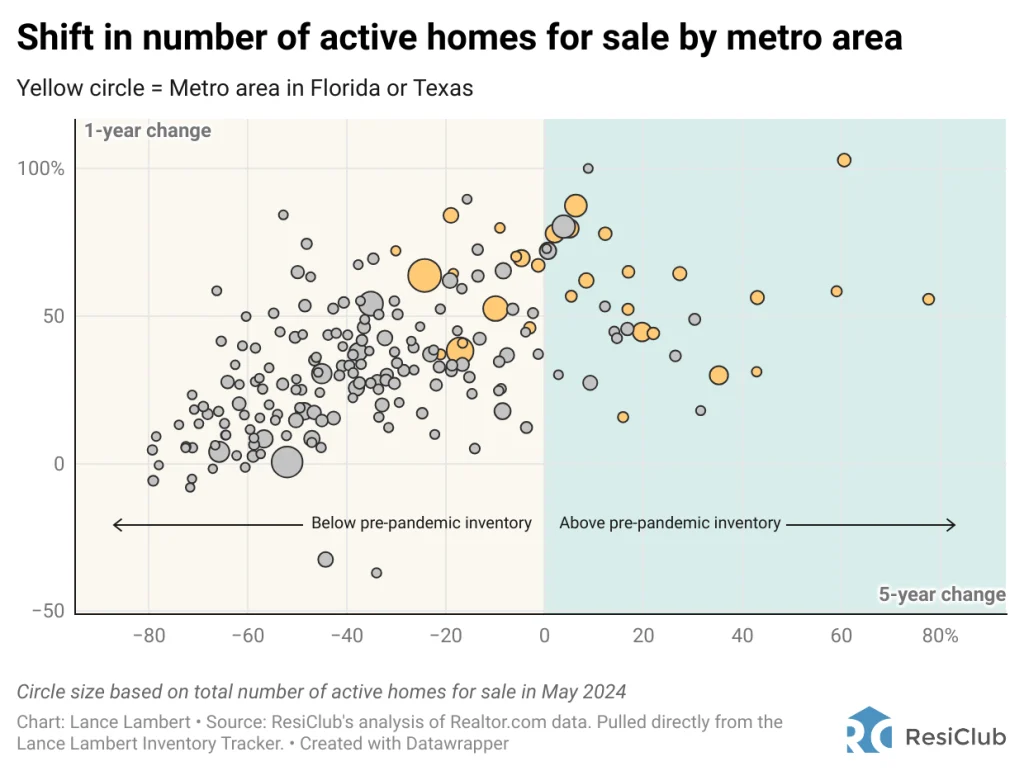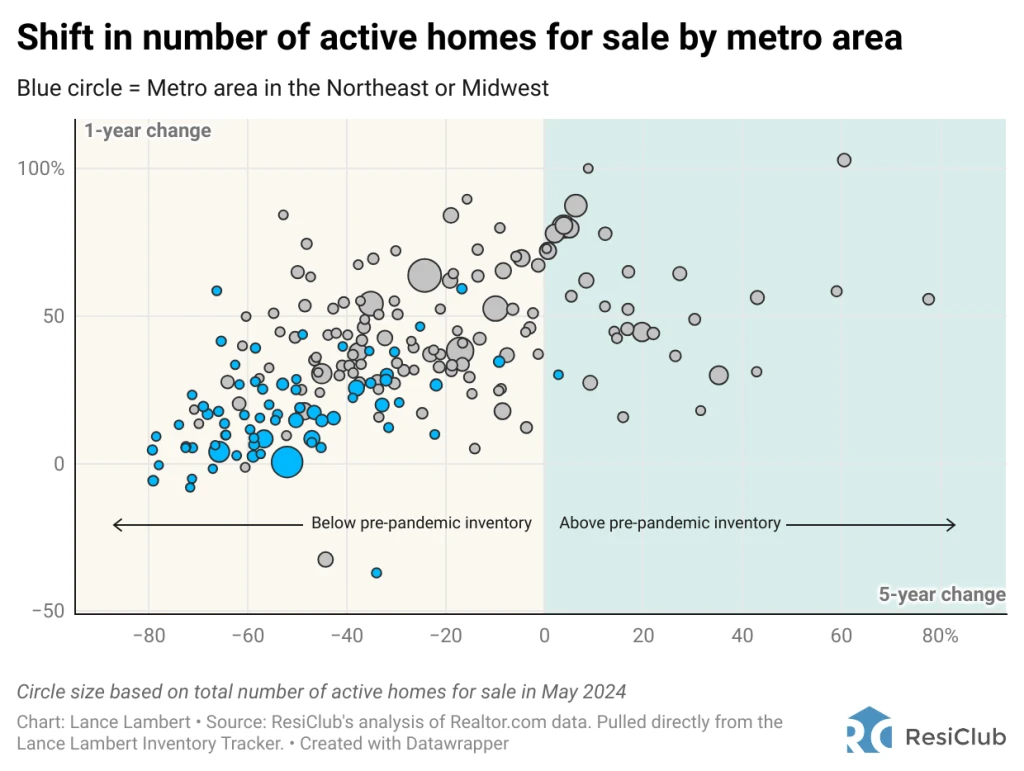June 29, 2024
32 of the nation’s 200 largest housing markets are back to pre-pandemic inventory levels
A new interactive chart tracks how inventory is shifting across the largest housing markets in the U.S.
Want more stories from Lance Lambert’s ResiClub in your inbox? Subscribe to the free, daily ResiClub newsletter.
During the pandemic housing boom, homes were selling so quickly they barely even registered as inventory. In fact, the housing market was so overheated that in May 2021, none of the nation’s 200 largest markets had inventory levels above those of May 2019.
As mortgage rates spiked and the boom abated in 2022, national active inventory for sale slowly began to increase as homes sat on the market longer.
By May 2023, 7 of the nation’s 200 largest housing markets had inventory levels above pre-pandemic levels.
In May 2024, 32 of the nation’s 200 largest markets were back above pre-pandemic inventory levels. Of those, 19 are in Texas or Florida. That includes markets like Austin, Killeen, Lubbock, and Waco in Texas, as well as Punta Gorda and Lakeland in Florida.
To track the inventory situation moving forward, ResiClub created a new scatter plot chart. The Y-axis shows how much active inventory has risen on a year-over-year basis (192 of the nation’s 200 largest markets are up YoY), while the X-axis shows inventory compared to the same month in 2019 (only 32 of the 200 largest markets are back above pre-pandemic levels).
Click here to explore an interactive version of the chart below.

While national active inventory for sale is up 35% on a year-over-year basis, by far the biggest gains are occurring in Southeast and Southwest markets around the Gulf.
Look no further than the chart above—where we’ve colored Florida and Texas markets yellow.
Not only do Gulf markets have greater levels of new single-family home construction hitting the market, but many of them are also experiencing home insurance shocks. Additionally, some areas in Texas and Florida, including Austin, saw home price growth during the boom that stretched prices far beyond their pre-pandemic fundamentals.
Click here to explore an interactive version of the chart below.

On the flip side, housing markets in the Northeast and Midwest (colored blue in the chart above) remain tight.
Unlike many Southwest and Southeast housing markets, many Northeast and Midwest markets have lower levels of homebuilding. As new supply becomes available in Southwest and Southeast markets, and builders use affordability adjustments like mortgage-rate buydowns to move it, it has created a cooling effect in the resale market. The Northeast and Midwest don’t have that same level of new supply, so resale/existing homes remain the only game in town.
Why does this matter?
Generally speaking, housing markets where active inventory has returned to pre-pandemic levels have experienced weaker home price growth over the past 24 months. Conversely, housing markets where active inventory remains far below pre-pandemic levels have, generally speaking, experienced stronger home price growth over the past 24 months.
ABOUT THE AUTHOR
Fast Company
(13)